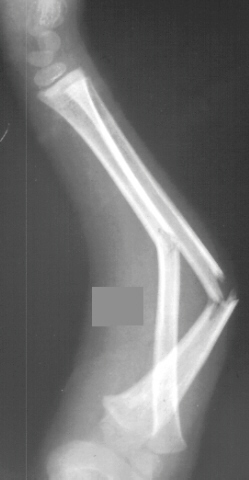

In adults, the healing is slower and results usually not as good.Ĭomplications of surgery can include non-union, malunion, nerve palsy and damage, muscle damage, arthritis, tendonitis, infection, stiffness and loss of range of motion, compartment syndrome, audible popping or snapping, deformity, and chronic pain associated with surgical hardware such as pins, screws, and plates. If diagnosis is delayed, reconstructive surgery is needed and complications are much more common and results are poor. Preliminary biomechanical studies suggested a correlation between ulnar fracture localization and clinical result. In children, the results of early treatment are always good. Background: Monteggia fractures and Monteggia-like lesions result after severe trauma and have high complication rates. Osteosynthesis promotes stability of the radial head dislocation and allows very early mobilisation to prevent stiffness. Osteosynthesis by open reduction and internal fixation of the ulnar shaft is considered the standard of care in adults. Monteggia fractures may be managed conservatively in children with closed reduction by resetting and casting, but due to high risk of displacement causing malunion, open reduction internal fixation is typically performed. IV – Combined type (5%) – ulna shaft and radial shaft are both fractured and radial head is dislocated, typically anteriorly. III – Lateral type (20%) – ulna shaft angulates laterally (bent to outside) and radial head dislocates to the side. II – Flexion type (15%) – ulna shaft angulates posteriorly (flexes) and radial head dislocates posteriorly. I – Extension type (60%) – ulna shaft angulates anteriorly (extends) and radial head dislocates anteriorly. There are four types of classifications based upon displacement of the radial head.īado Classification – Monteggia Fractures Isolated ulnar shaft fractures are most commonly seen in defence against blunt trauma (e.g. The Ulna fractures in the proximal one-third of the shaft due to extreme dislocation.ĭepending on the impact and forces applied in each direction, degree of energy absorption determines pattern, involvement of the radial head and whether or not open soft tissue injury occurs. These fractures are an uncommon class of forearm fractures. Ideas include: sensation kit (small squares of various materials transitioning from smooth to rough: velvet/moleskin, foam, Velcro, netting, sandpaper, etc.A fracture of the proximal third of the ulna with dislocation of the proximal head of the radius.įall on an outstretched hand with the forearm in excessive pronation. A Monteggia fracture is a fracture of the proximal ulna coupled with a radial head dislocation.Over fracture site or in fingertips after nerve injury.Ideas include: animal walks for weightbearing, wall push-ups against yoga ball,.Grip/pinch/lift strengthening and weight bearing.The fracture of ulna is reduced by closed or open reduction followed by stabilization of ulna with Rush pin, K-wires or Dynamic compression plate. Ideas include: painting on vertical surface, playing cards, tossing magnetic darts, wrist maze, sport simulation (overhead tossing, dribbling, racket movements, etc.) Background Monteggia fracture dislocation may need operative management.This report identifies a unique variant of Monteggia. Identifying growth plate trauma and subsequent surgical management are of critical importance. Although this is well described and classified in adults, it is uncommon in children. Range of motion to all joints involved in orthotic The Monteggia fracture is a fracture to the proximal third of ulna associated with a radial head dislocation.Risk of recurrent fractures up to 6-12 months Background: Monteggia fracture dislocations are rare injuries that comprise less than five percent of all forearm fractures.If there is adequate healing of the ulna between 4-6 weeks, the cast is removed and the patient transitioned to removable forearm orthotic, at which time, therapy is initiated 1. Decreased ROM at elbow may indicate dislocation. Patients are highly monitored throughout the first three weeks, as this is the time period when instability is most likely to occur. X-ray of Monteggia fracture of right forearm, showing fracture of ulna and dislocation of radius. A Monteggia fracture, as an incomplete fracture of long bones, defined as a partial thickness fracture which just the cortex and periosteum are interrupted only on one side of the affected bone. Custom thermoplastic long-arm/ Muenster orthotic to support forearm and block full elbow range of motion.


 0 kommentar(er)
0 kommentar(er)
